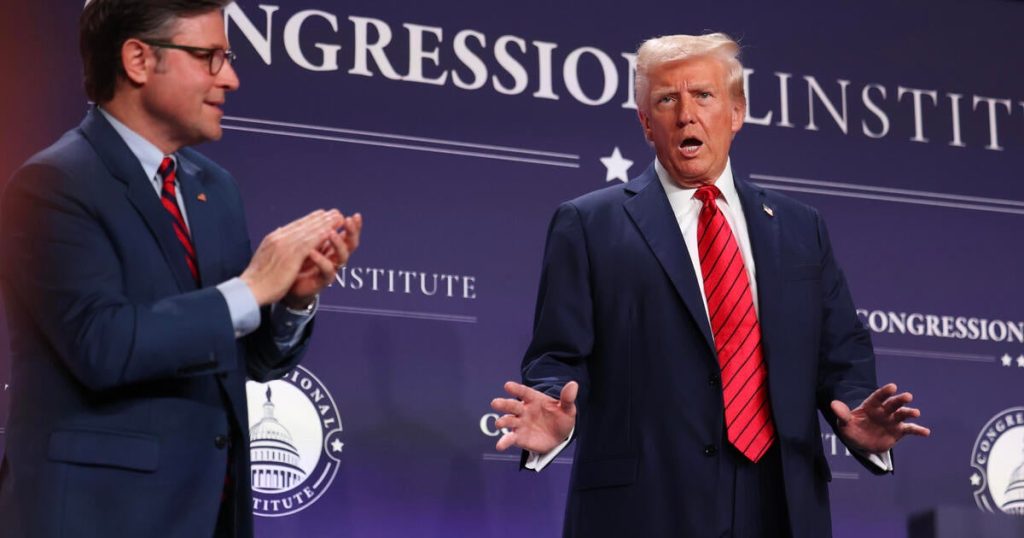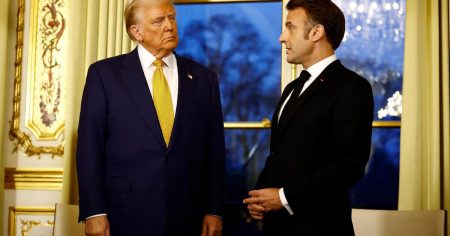Speaker Johnson on the Timeline for Budget Plan: A Detailed Overview
The debate over the federal budget has intensified in Washington, with President Trump recently weighing in on the competing proposals from House and Senate Republicans. At the center of the discussions is House Speaker Mike Johnson, who has been working closely with both chambers to advance a unified Republican budget plan. The president’s endorsement of the House’s single-bill approach has added momentum to the process, but the Senate’s alternative two-bill strategy remains a point of contention. As the clock ticks on the legislative calendar, the stakes are high for Republicans to deliver on their fiscal priorities ahead of the 2024 election cycle.
President Trump Endorses House Budget Plan, Urges Unified Approach
President Trump has officially thrown his support behind the House Republicans’ budget proposal, which seeks to combine trillions of dollars in spending and tax cuts into a single bill. In a statement on Truth Social, Trump emphasized the importance of passing the House budget to "kickstart" the reconciliation process, a procedural tool that allows the Senate to pass legislation with a simple majority rather than the usual 60-vote threshold. "We need both Chambers to pass the House Budget to ‘kickstart’ the Reconciliation process, and move all of our priorities to the concept of, ‘ONE BIG BEAUTIFUL BILL,’" Trump wrote. He praised House and Senate Republicans for their collaboration, calling their efforts "SPECTACULAR," but made it clear that the House’s comprehensive approach aligns more closely with his administration’s agenda.
The House proposal seeks to address Trump’s entire policy agenda in one sweeping bill, including the extension of his 2017 tax cuts, border security measures, and defense spending priorities. By contrast, the Senate’s two-bill plan, led by Senate Budget Committee Chair Lindsey Graham, prioritizes border security and defense spending first, with the tax cuts extension left for later. Trump expressed concern that the Senate’s approach would only partially address his agenda initially, potentially leaving key priorities on the cutting room floor.
Senate Republicans Move Forward with Two-Bill Plan
Despite Trump’s endorsement of the House’s single-bill approach, Senate Republicans are pressing ahead with their two-bill strategy. Senate Majority Leader John Thune announced that the Senate would begin advancing its proposal on the floor this week, following the advancement of both the House and Senate budget resolutions out of committee last week. The Senate had initially deferred to the House to allow them to take the lead, but they began moving forward earlier this month as the legislative timeline grew tighter.
The Senate’s two-bill plan is designed to expedite action on critical priorities such as border security and defense spending, which are seen as urgent by many Republicans. By separating these issues from the tax cuts extension, Senate leaders hope to avoid potential delays or roadblocks that could arise from trying to pass a more comprehensive bill. However, House Republicans have argued that the two-bill approach carries a higher risk of failure, particularly given the narrow GOP majority in the House. They contend that a single bill would streamline the process and reduce the chances of procedural mishaps.
Budget Reconciliation: A Key Tool in the Legislative Process
At the heart of both the House and Senate proposals is the use of budget reconciliation, a legislative process that allows the Senate to pass certain bills with a simple majority rather than the usual 60-vote threshold required to overcome a filibuster. Reconciliation is a powerful tool for advancing major policy initiatives, and both chambers are relying on it to move their respective budget plans forward.
Under the reconciliation process, lawmakers can include provisions that would otherwise besubject to filibuster, such as tax cuts and spending changes, in a single bill that can pass with a simple majority in the Senate. This makes it an attractive option for Republicans, who hold a slim majority in the House and a razor-thin majority in the Senate. However, the process is not without its challenges. Reconciliation bills must adhere to strict budgetary rules, and any provisions deemed extraneous by the Senate parliamentarian can be stripped from the bill.
Legislative Strategy and Political Implications
The debate over the budget process reflects broader strategic differences within the Republican Party about how to advance their legislative priorities. The House’s single-bill approach is seen as a bold, ambitious move to deliver on key promises to voters, including tax cuts and increased defense spending. However, it also carries significant political and procedural risks, as any misstep could derail the entire effort.
The Senate’s two-bill approach, on the other hand, represents a more cautious strategy, prioritizing quick wins on border security and defense while leaving the tax cuts for later. This approach aims to minimize political fallout and procedural complications, but it risks frustrating Republican voters who are eager to see the full scope of the Trump agenda implemented.
As the budget debate unfolds, Speaker Johnson and Republican leaders in both chambers will need to navigate these competing demands carefully. The outcome will not only shape the fiscal trajectory of the nation but also have significant implications for the 2024 election cycle. With President Trump’s endorsement of the House plan, the pressure is on lawmakers to deliver a unified and effective budget strategy that aligns with the party’s vision and satisfies its base.
Conclusion: A Crucial Moment for Republican Leadership
The budget negotiations taking place on Capitol Hill represent a critical test for Republican leadership, highlighted by President Trump’s endorsement of the House’s single-bill approach and the Senate’s decision to move forward with their two-bill plan. The stakes are high, with trillions of dollars in spending and tax cuts on the line, as well as the political momentum heading into the 2024 elections.
Whether the Republican Party can coalesce around a unified strategy remains to be seen. Speaker Johnson and Senate leaders face the daunting task of reconciling their differences and advancing a budget plan that meets the expectations of both the party’s base and the broader electorate. The outcome will not only determine the success of the current legislative session but also set the stage for the party’s messaging and priorities in the run-up to the next presidential election.















